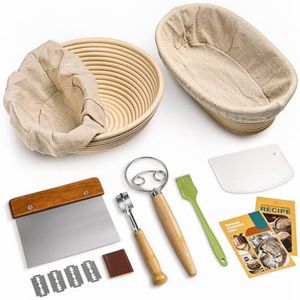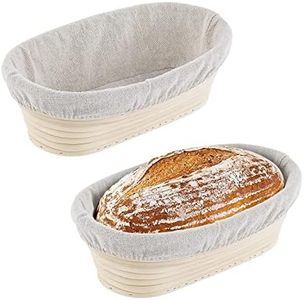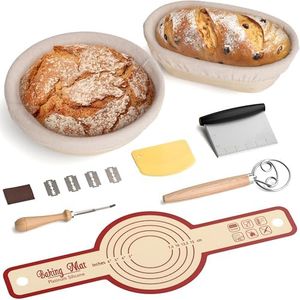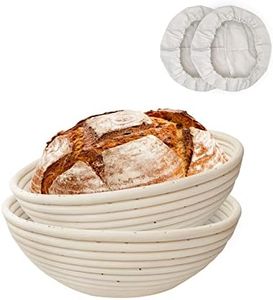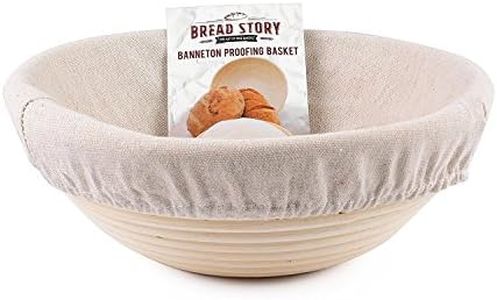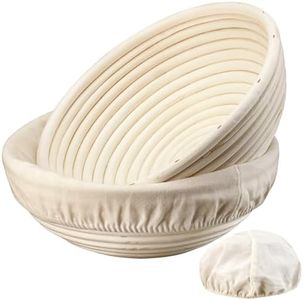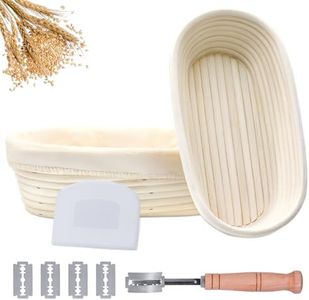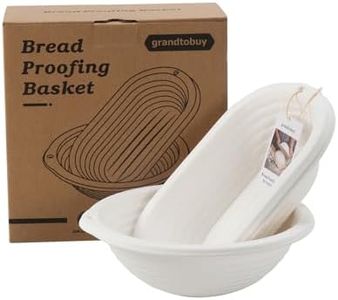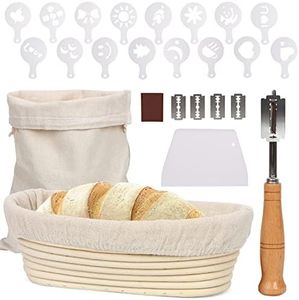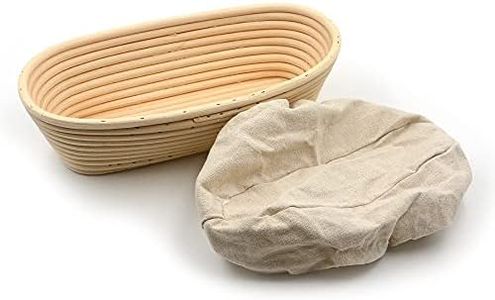We Use CookiesWe use cookies to enhance the security, performance,
functionality and for analytical and promotional activities. By continuing to browse this site you
are agreeing to our privacy policy
10 Best Banneton Basket
From leading brands and best sellers available on the web.Buying Guide for the Best Banneton Basket
Choosing the right banneton basket is an important step in improving your bread-baking results. Bannetons, also known as proofing baskets, help your dough keep its shape while it rises, making for a better loaf in both texture and appearance. With so many options available, it's important to understand a few key specifications so you can pick the best fit for how and what you bake.Basket MaterialBanneton baskets are commonly made from natural rattan cane, wood pulp, or plastic. The material affects how much moisture is wicked away from the dough and how the crust forms. Rattan is the traditional choice and is valued for its breathability and ability to draw moisture from the dough surface, helping create a crisp crust and appealing flour patterns. Wood pulp is eco-friendly and absorbent, promoting an even drier surface, which is ideal for some bakers. Plastic baskets are easy to clean and durable but may not absorb moisture as well. If you enjoy a traditional artisan loaf and want that rustic crust, rattan is a great choice. For a low-maintenance and hygienic option, plastic may suit you. If you are keen on sustainability, consider wood pulp.
ShapeThe most common banneton shapes are round and oval, but there are also long, rectangular, and even specialty shapes. Shape is important because it determines the final shape of your bread and affects how the dough rises. Round baskets are good for boules (round loaves), while oval or oblong baskets are designed for bâtards or sandwich loaves. Pick a shape based on what type of bread you like to bake most often. If you’re just starting and aren’t sure, a round banneton is the most versatile and popular.
Size/CapacityBannetons come in different sizes, usually measured by how much dough (by weight) they can hold. Typical sizes range from 500 grams to 1.5 kilograms or more. This is important because matching the basket size to your usual dough quantity ensures the dough rises properly and holds its shape. To pick the right size, think about how big you like your loaves and the typical recipes you use. For a standard home loaf, a 750-gram to 1-kilogram banneton is a safe starting point. If you bake small rolls or mini loaves, go smaller; if you bake for a crowd, look for a larger size.
Liner or No LinerMany bannetons come with a cloth liner, while others are intended to be used bare. Using a liner prevents dough from sticking and gives the loaf a smooth crust, while using the basket without a liner creates attractive flour patterns and a rustic look. The choice depends on your desired bread appearance and the hydration level of your dough. Sticky, very wet doughs can benefit from a liner, while stiffer doughs are easier to handle without it. Consider how much you value the ease of release versus the artisan look when making your choice.
Ease of CleaningSome materials and designs are easier to keep clean than others. Rattan can trap bits of dough in its spiral, which may require more careful brushing, while plastic and some liners can be simply wiped or washed. If you want the convenience of low or easy cleaning maintenance, consider how you feel about occasional deep-cleaning and whether the included cleaning tool will be sufficient.

